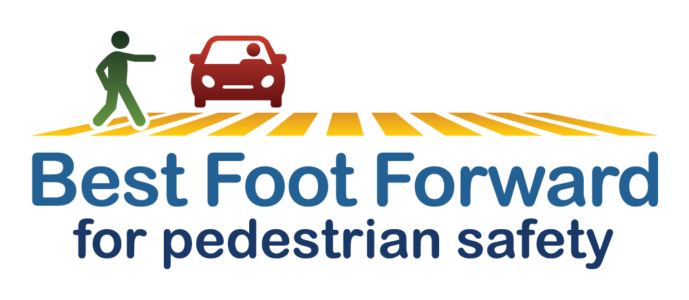ORLANDO, FL – As students throughout Central Florida prepare for a return to the classroom,…

Crosswalk crackdown: a look back at the March Operation BFF
 On the unseasonably cold Wednesday morning of March 15, David Mittiga watched cars and trucks speeding along Pine Hills Road and quipped that he was about to take on the most dangerous assignment of his 14 years as an Orange County Sheriff’s Office (OCSO) deputy:
On the unseasonably cold Wednesday morning of March 15, David Mittiga watched cars and trucks speeding along Pine Hills Road and quipped that he was about to take on the most dangerous assignment of his 14 years as an Orange County Sheriff’s Office (OCSO) deputy:
Mittiga intended to walk from one side of the four-lane road to the other in a crosswalk at El Trio Way, near Evans High School.
About a block south of him was OCSO Cpl. John Ramsey. The two had formed a team to issue $164 tickets and warnings to motorists who didn’t yield to people walking in crosswalks as part of a safety campaign dubbed Operation Best Foot Forward.
Mittiga walked back and forth for more than an hour, often waiting on a concrete island midway as vehicles whizzed by, most of them well over the posted 40 mph speed limit. The only drivers who consistently stopped were those in school buses.
Ramsey issued tickets to drivers failing to yield—which also can result in the addition of three points to the offender’s driver’s license—and one warning. With additional help and time, he could have issued hundreds.
“There just needs to be more care out there,” said Mittiga, who was dressed in a jacket and jeans instead of the normal uniform worn by the department’s motorcycle unit.
Along with Mittiga and Ramsey, the Sheriff’s Office had deputies monitoring four other crosswalks Wednesday: Woodbury Road & Mallory Circle; Dr. Phillips Boulevard & Sandberry Boulevard; Universal Boulevard & Rosen Hospitality College; Landstar Boulevard & Misley Drive.
In January, the Orlando-Sanford-Kissimmee area dropped from first place to third on the list of most dangerous dangerous places to walk in the country. But by mid-March, 24 people were struck and killed on roads in Orange, Seminole, Lake and Osceola counties, according to the Florida Highway Patrol. Last year at that time,18 were killed.
This was why the Best Foot Forward program (BFF) was created in 2012. The need for crosswalk enforcement is obvious each time a pedestrian fatality is reported.
BFF project director Amanda Day, who was with Mittiga and Ramsey Wednesday, said too many roads in the area are designed to move cars and trucks at high speeds, even through largely residential areas like Pine Hills.
“We need to slow down and motorists need to remember that we are all pedestrians. We’re all people first,” she said.
A program of Bike/Walk Central Florida, the long-term goal of BFF is to reduce pedestrian injuries by half in ten years. Short term, BFF wants to increase driver yield rates by 60 percent on roads posted 35 mph and higher, and a 10 percent increase on driver yield rates year over year on roads posted 40 mph and higher.
Two ways to get through to drivers: periodic enforcement of crosswalks, and spreading the word that by law, drivers are required to stop for people in crosswalks.
Ramsey, who has been involved in several crosswalk initiatives, said people who get tickets often sing the same chorus: they claim not knowing the law says they must stop. Such was the case with three of the first four tickets he wrote during the March enforcement.
One driver told Ramsey he didn’t see Mittiga in the crosswalk. Another, according to Ramsey, said, “I saw him (Mittiga). I slowed down so I wouldn’t hit him.”
Ramsey had two suggestions to make life safer for people on foot: Add yielding to walkers on the test drivers must pass to get a license. Better yet, teach elementary students about using crosswalks by painting similar lines on hallway floors and enforcing the rules that too many drivers are still unaware of.
“It’s cheap,” Ramsey said.
Plus, stopping for pedestrians would become a habit for people long before they’re ready to get behind the wheel.




This Post Has 0 Comments